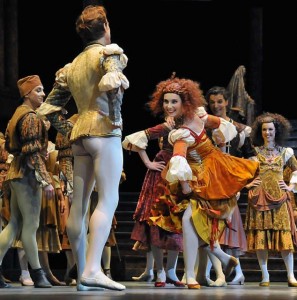 The New York Times article, “Beer. Nachos. Arena. Ballet?” highlights the recent effort of The Royal Ballet to expand access to its programming. In mid-June, the Company held four performances of Romeo and Juliet at South London’s The O2 arena, the world’s largest single-roofed structure, which holds up to 20,000 people depending on the event.
The New York Times article, “Beer. Nachos. Arena. Ballet?” highlights the recent effort of The Royal Ballet to expand access to its programming. In mid-June, the Company held four performances of Romeo and Juliet at South London’s The O2 arena, the world’s largest single-roofed structure, which holds up to 20,000 people depending on the event.
It struck me that here again we see an arts organization doing something unusual, outside its confines, to build general and audience awareness, maintain relevance, and advance its outreach and education efforts. It’s these significant, sometimes bold, efforts that truly help change perception and thus positioning of an organization. But the Ballet was also accomplishing something greater: it was asserting its broad appeal.
I wrote about an effort like this awhile back with Thinking Like Visitors in Repositioning the Nelson-Atkins Museum. Theirs was a modest effort that goes to the heart of creating opportunities for more people to appreciate and better understand art. The Royal Ballet’s effort goes to the heart of creating better access through sheer numbers and a dramatic change of venue.
This type of effort folds in nicely with how the Ballet describes itself, “Access is a key issue for the Company, via televised and cinematic performances, outdoor big screen performances, international touring, and through the work of the Company’s Education Department.” It seems like they hit many of those notes with this series as reviews and audience reaction were generally favorable as the article points out.
Kevin O’Hare, the Ballet’s newly appointed director, stated on his hiring, “I will aim to use all the traditional and new platforms now available to engage our audiences in our classic repertoire, and the Ballet’s unique heritage. I want to continue to invigorate audiences with new work and emerging talents.”
The advertisement and trailer for the series were startlingly engaging as well and they are altogether contemporary in their production values, musical style, and arresting images and graphics. Oh, and did I mention that in bringing Romeo and Juliet to The O2, one of the Company’s most beloved, enduring, and famous works—and most accessible and dramatic, that this practically ensured the series’ success. As one commenter put it, “The Ballet sure can sell itself!”
But it’s really more than that, it’s a rather calculated and strategic move on the Ballet’s part to deliver on its mandate of greater accessibility of its art to more people. “A way for ballet to break free from its rarefied, elitist image.” as the Times writer put it. Oh, those Brits, such fresh, bold ideas in arts democracy.
